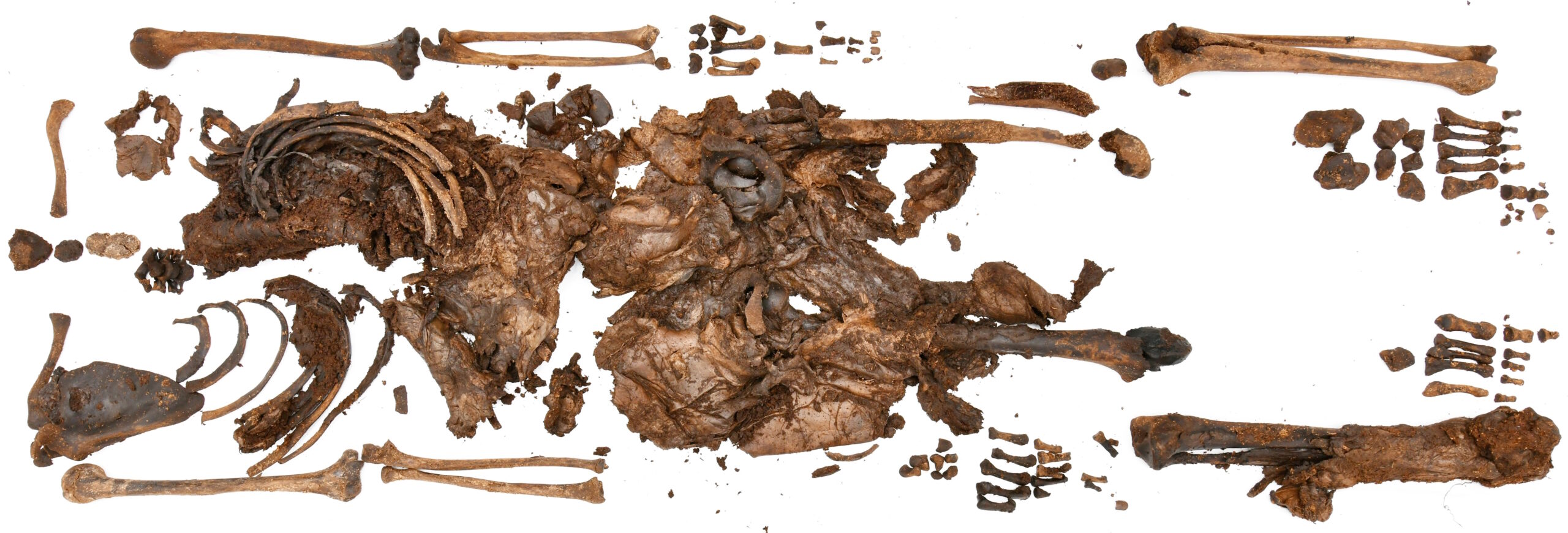New research has found that the Iron Age bog body discovered in 2023 in Bellaghy, County Derry, Northern Ireland, initially thought to be a teenaged boy was in fact a female between 17 and 22 years old when she died 2,000 years ago. The vast majority of Iron Age bog-preserved individuals are male, which makes this discovery highly significant.
The headless body — bones, some soft tissues and one kidney — were found in the peat bog in October of 2023. The Police Service of Northern Ireland’s Body Recovery Team were unable to determine if they were recent or archaeological, so archaeologists excavated the remains and a forensic anthropologist performed a post-portem on them. The anthropologist found the remains were definitely archaeological, dating to between 343 and 1 B.C., and that they belonged to a male between 13 and 17 years old.
Those preliminary results have now been upended by an international team of forensic scientists and archaeologists who have spent a year studying the recovered remains.
The individual had an estimated stature of around 5 foot 6 inches. While the body was well preserved, the skull was absent and was not recovered. Cut marks on the neck vertebrae indicate the cause of death as an intentional decapitation in the bog. This may be part of a pattern of ritual and sacrifice during the Iron Age period. Part of a woven item made of plant material was also recovered from below the knees and is thought to be part of an associated artefact. The museum is currently working with specialists to identify what this artefact could potentially be and are describing it as a woven plant-based fabric, likely associated with the individual and dating to this period. […]
Eileen Murphy is Professor of Archaeology at the School of Natural and Built Environment at Queen’s University Belfast. She carried out the osteological assessment which provided a biological profile for the individual and ascertained the cause of their death. She explained,
“It was a privilege to undertake the osteological analysis of these important, but also very poignant, archaeological human remains. As is the case for so many Iron Age bog bodies, the young woman suffered a highly violent death which involved the flow of blood from her throat followed by decapitation. The head was taken away but the body was left where it fell only to be discovered by machine workers some 2000 years later. Further scientific analysis, including the conclusion of an aDNA analysis, will no doubt yield more fascinating findings.”
The human remains and woven artifact are now in the State Pathology Laboratory to National Museums NI where they will undergo conservation after the scientific studies are concluded.
* This article was originally published here









No comments:
Post a Comment